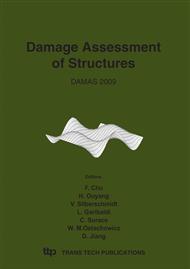p.479
p.487
p.495
p.505
p.513
p.521
p.531
p.539
p.547
Experimental Study on Rubbing Acoustic Emission for Rotor-Bearing System Based on Parameter Analysis
Abstract:
Rubbing between the rotor and the stator is the frequent fault and will cause very serious accident, even catastrophe, to rotating machinery. Therefore, timely detection of such rubbing is very important avoid severe consequences. Vibration based methods are very mature and traditional methods but not effective to detect incipient rubbing in rotating machinery. Rubbing between the rotor and the stator will cause elastic strain in the rubbing location and thus can produce acoustic emission (AE). Apparently, such AE contains direct and abundant information about the rubbing and can be used to detect and diagnose such fault effectively. In this paper, the AE based method is proposed for detecting and identifying the rubbing of the rotor-bearing system. An experimental study is presented to investigate the characteristics and features of rubbing AE using parameter analysis method. The results show that AE is very sensitive to the rubbing and AE parameters can reveal the characteristics and features of rubbing AE. Parameter analysis demonstrates that rubbing AE contains multiple modals, which will attenuate with propagation by negative exponent manner.
Info:
Periodical:
Pages:
513-519
Citation:
Online since:
June 2009
Authors:
Price:
Сopyright:
© 2009 Trans Tech Publications Ltd. All Rights Reserved
Share:
Citation:


